公告資訊
2024.11.22



公告資訊
2024.11.22
Taitung is home to a rich heritage of Austronesian crafts, arts, and culture. With the vision of establishing Taitung as the “Cultural Homeland of Austronesia,” the Taitung County Government has been actively promoting its unique cultural identity on an international scale through diverse initiatives over the years. In 2023, the ” Ripples of the Pacific ” international exchange program was launched to further this mission. The program invites Austronesian artists to undertake residencies in Taitung while also supporting local Taitung artisans in pursuing residencies in Austronesian countries. This effort fosters the “flow and exchange between islands,” creating deeper connections and allowing more people to appreciate the beauty of Taitung’s Austronesian culture.
Ripples of the Pacific International Exchange Program centers on Austronesian culture and invites six artisans to embark on 30-day residencies in Austronesian countries. Through these residencies, the program fosters creative exploration of the diversity and profound meanings of Austronesian culture.
Participating artists include Taitung-based artisans Chang Chia-Hui, Wang Yu-Ching, and Su Yu-Ting, as well as three international artists: Thai contemporary jewelry artisan Rudee Tancharoen, Singaporean weaving artisan Kelly Jin Mei, and Tongan bark cloth painting artisan Tui Emma Gillies.
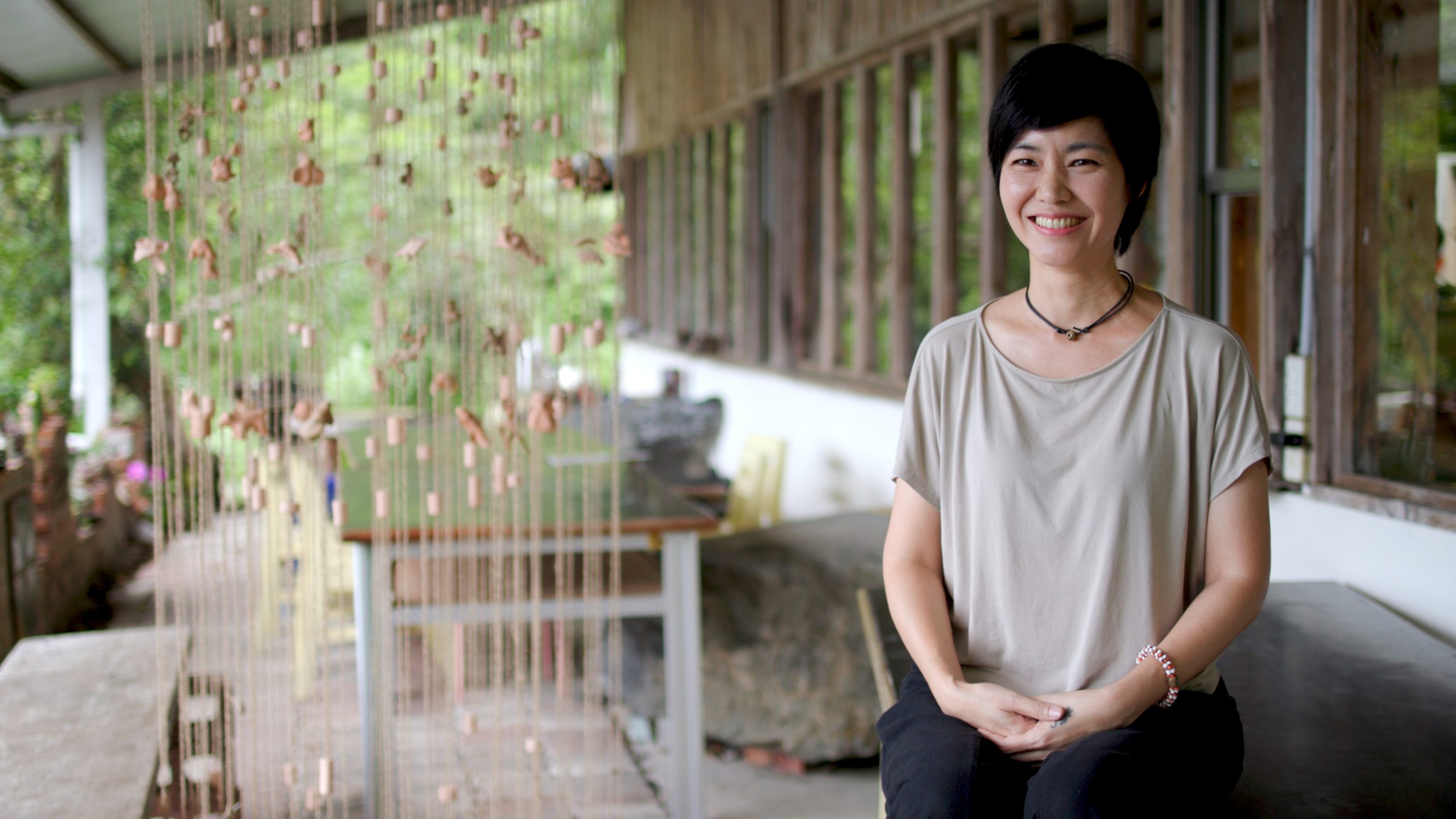
Thai contemporary jewelry artisan Rudee Tancharoen

Singaporean weaving artisan Kelly Jin Mei
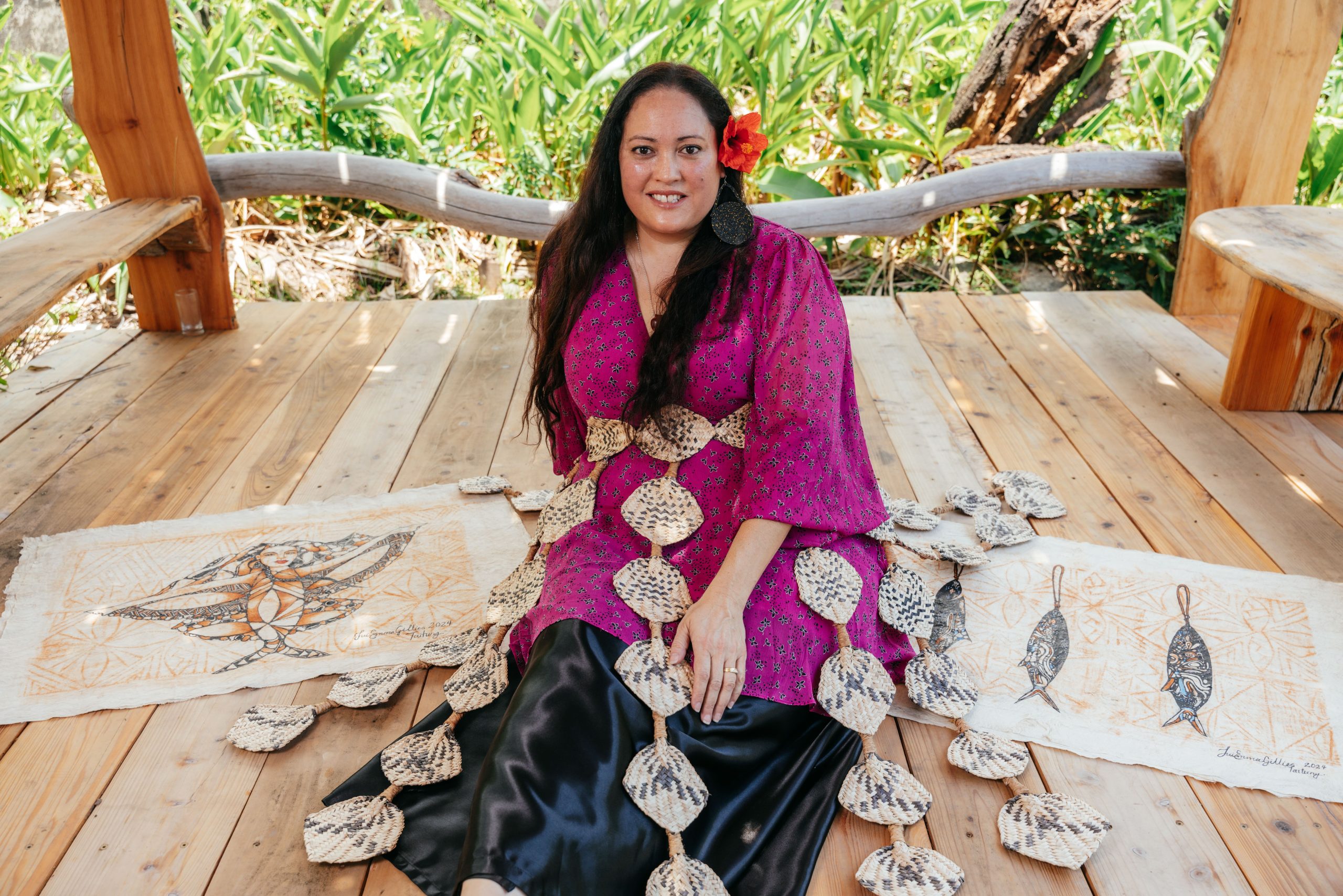
Tongan bark cloth painting artisan Tui Emma Gillies
This year’s selected international craft artists for the residency program are: Thai contemporary jewelry artisan Rudee Tancharoen, Singaporean weaving artisan Kelly Jin Mei, and Tongan bark cloth painting artisan Tui Emma Gillies. Each artist is hosted at different Taitung workshops: Rudee at Adisi Pottery, Kelly at the Abus Bunun Traditional waving Workshop, and Tui at the Highway 11 open Studio.
Thai artist Rudee Tancharoen drew on her understanding of Austronesian culture to create her work, Ripples from Dove Valley. Each ceramic piece, strategically positioned to form the semblance of a traditional Paiwan pot, offers a subtle nod to cultural heritage. At first glance, the pot’s presence is faint, almost ethereal—a testament to the ephemeral nature of memory and history. Yet, upon closer inspection, the observer is rewarded with a mosaic of fragments: Here, within this intricate mosaic, past and present converge, intertwined in a harmonious coexistence.
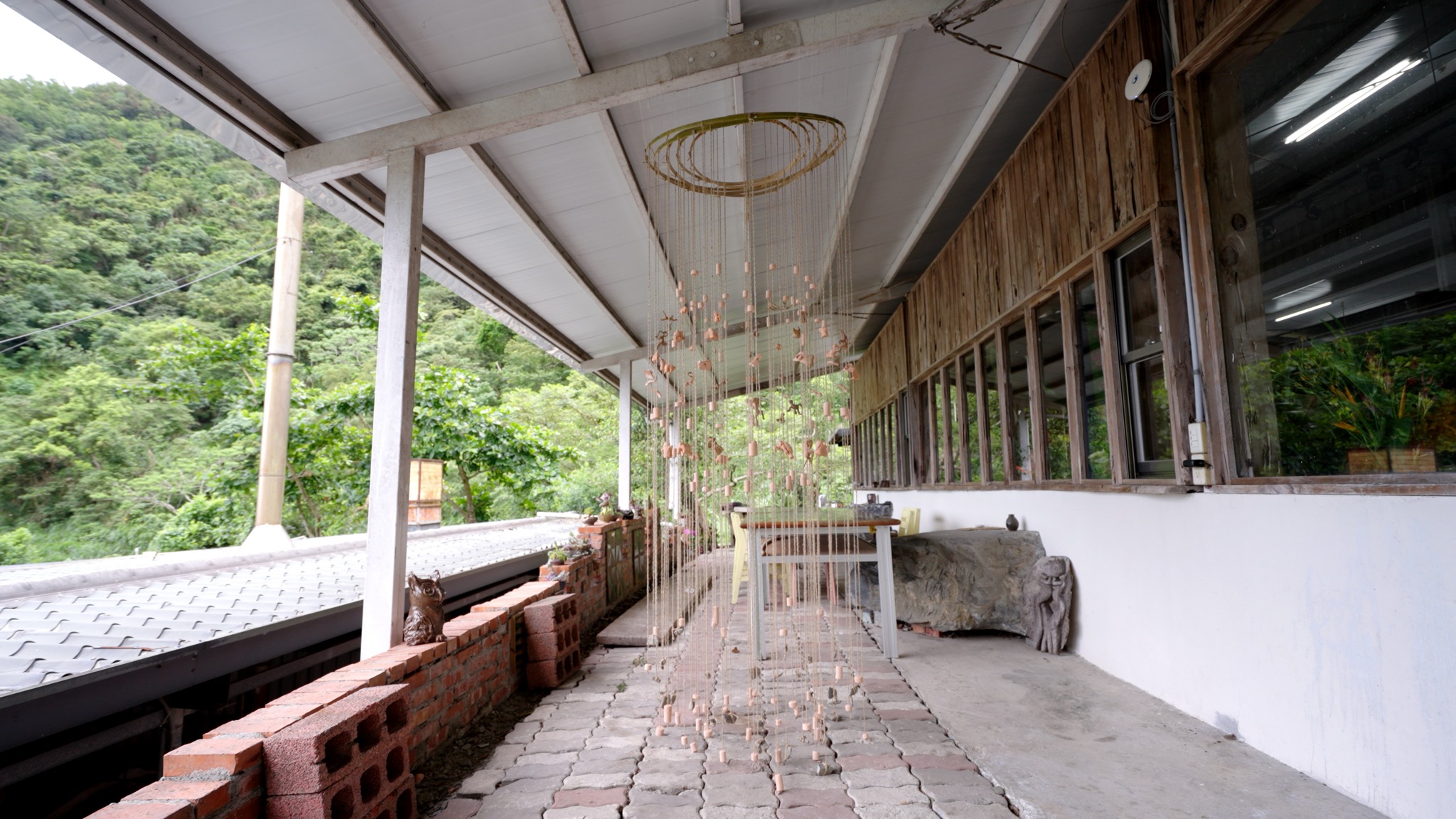
Ripples from Dove Valley by Rudee Tancharoen
Tongan/New Zealand artist Tui Emma Gillies incorporates traditional barkcloth techniques as the foundation for her contemporary art and design in her work Taitung Goddess. Taitung Goddess is a painting representing a flying fish of Taitung. The flying fish is in the form of a woman with the majestic Taitung Mountains as her hair. A cobra snake is climbing up her chest and around her neck heading back towards its home. The woman represents mother nature, the snake is often a symbol of healing, a powerful goddess we must support and work alongside to protect our ecosystems and oceans. I wanted to capture the essence of Taitung with the Tongan kupesi etchings coming through in the background.
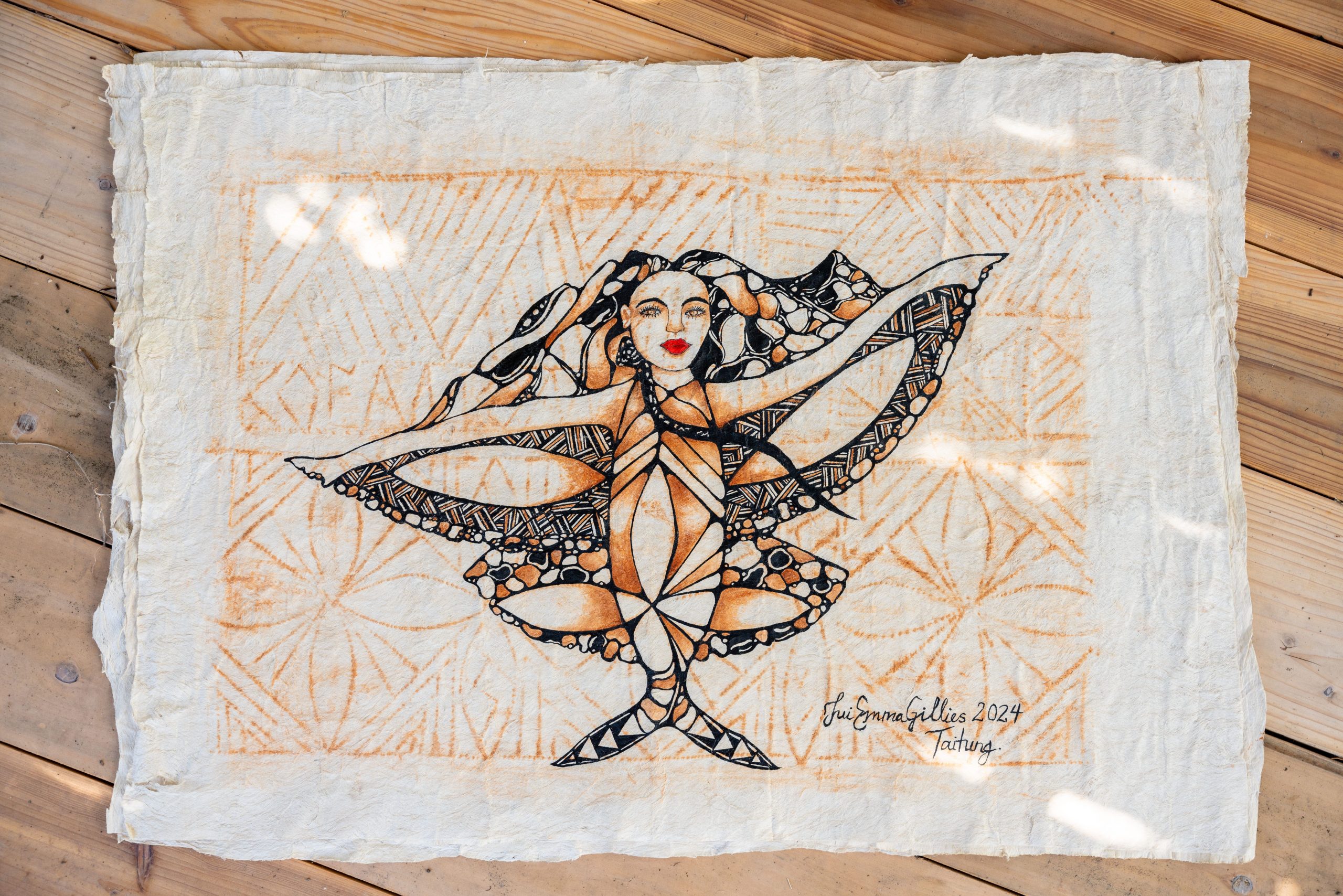
Taitung Goddess by Tui Emma Gillies
Singaporean artist Kelly Jin Mei, skilled in crochet weaving, collaborated with Abus to learn the entire process from material gathering and preparation to production. Combining traditional and modern weaving techniques, she created the piece Linked, which embodies her interpretation of Austronesian culture. This work splits apart but joins back into a single sculpture, suggesting how these Austronesian people who have walked down different paths all those years ago have a shared history.

Linked by Kelly Jin Mei
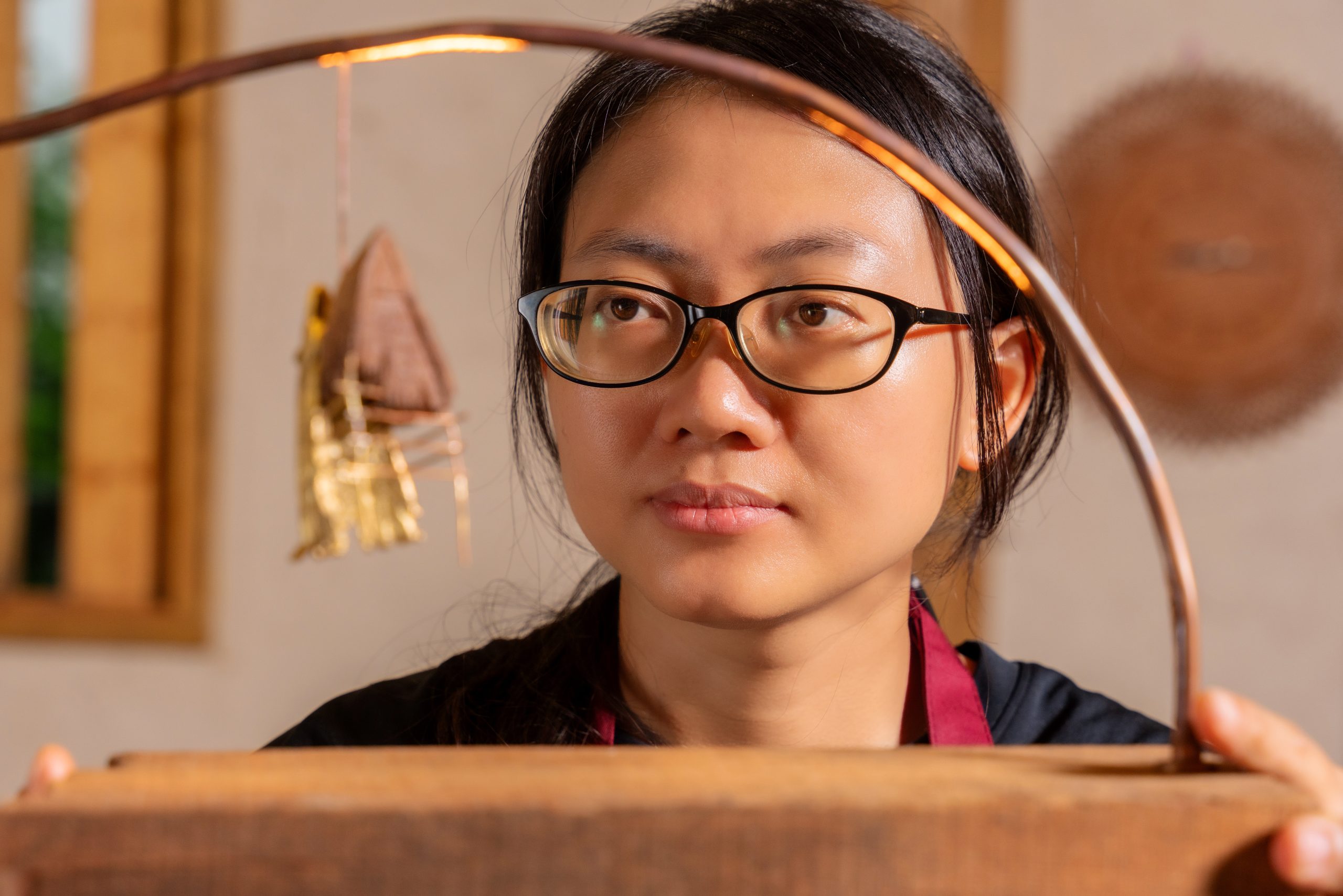
Taitung artist Su Yu-Ting
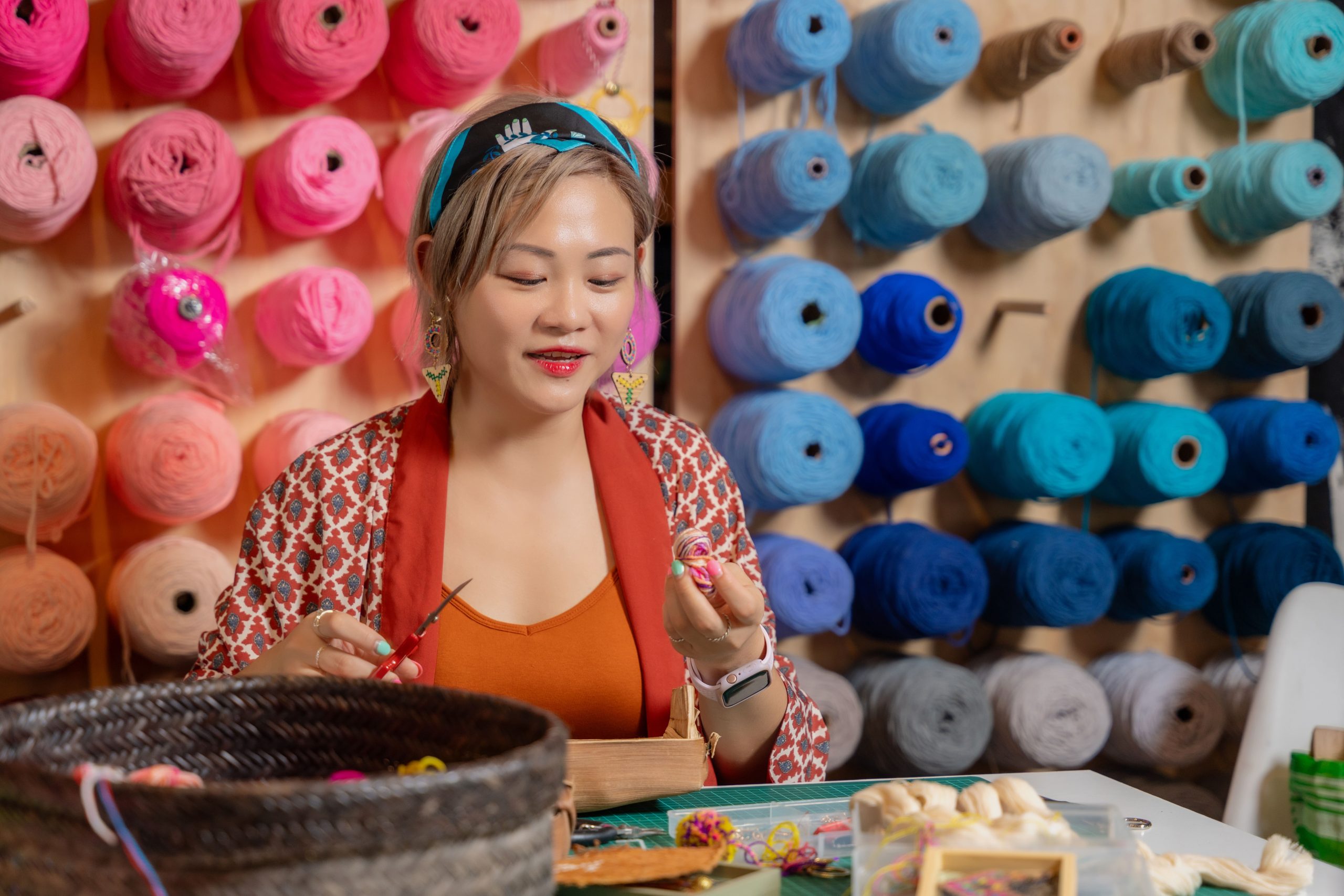
Taitung artist Wang Yu-Ching
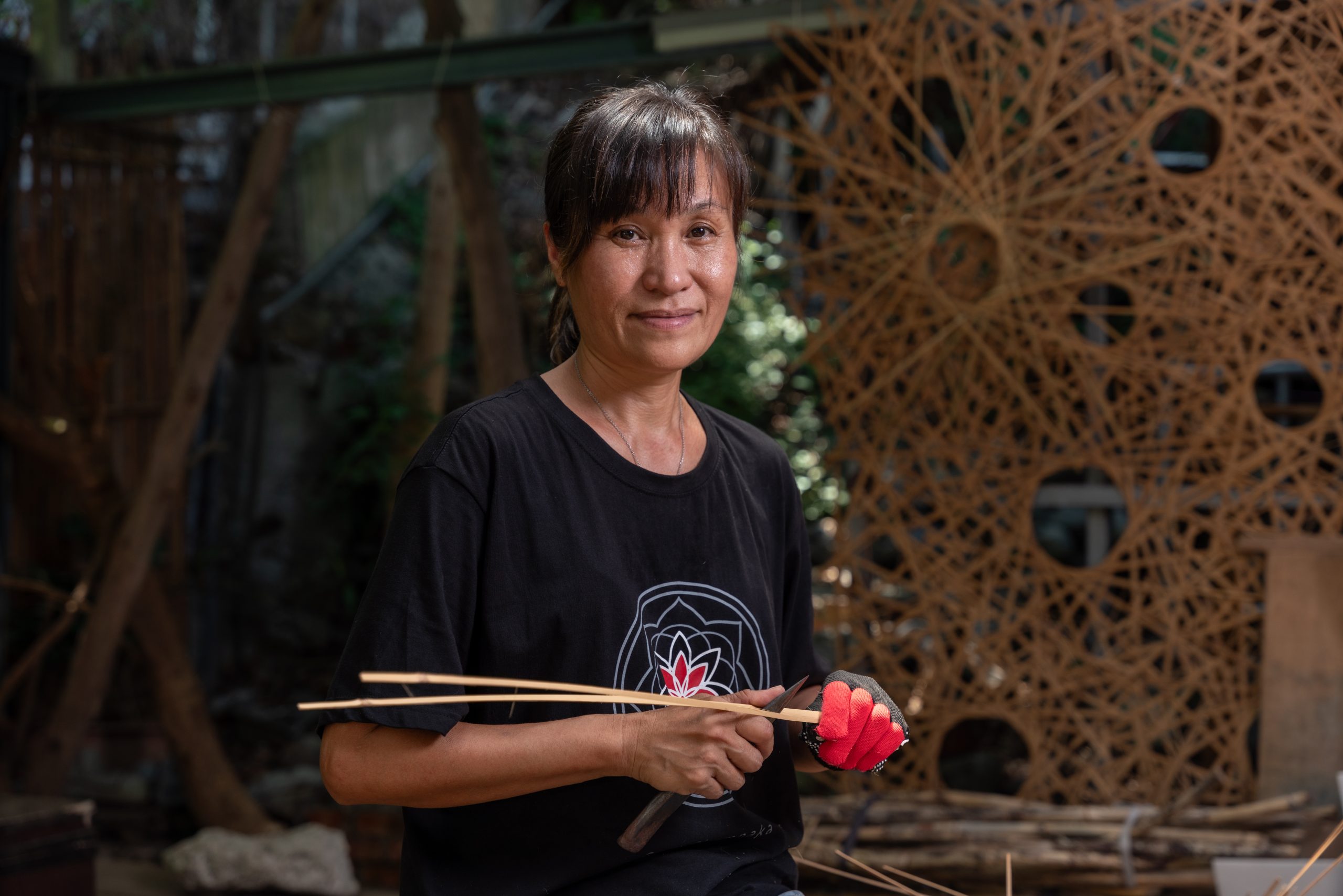
Taitung artist Chang Chia-Hui
The Taitung artisans participating in residency exchanges in Austronesian countries are Su Yu-Ting, Wang Yu-Ching, and Chang Chia-Hui. Su Yu-Ting is hosted at Altier Rudee in Thailand, Wang Yu-Ching at the Borneo Laboratory in Malaysia, and Chang Chia-Hui at the
Sari Chempaka Art Village in Malaysia. Their creations reflect a deep exploration of Taitung’s cultural traditions and contemporary art practices.
Taitung artist Su Yu-Ting, specializing in metalworking, traveled to the Moken community on Phayam Island in Ranong, Thailand, to create her piece Kabong. The Moken people, located on Phayan Island in Ranong Province, Thailand, are one of the three branches of the Austronesian peoples in southern Thailand. They are collectively referred to as “sea gypsies.” In the Moken language, “kabang” means houseboat. For the Moken, the kabang is a gift of life, enabling their survival at sea. They liken the kabang to a human being, with a mouth, belly, and bottom, and they coexist with it from birth to death.
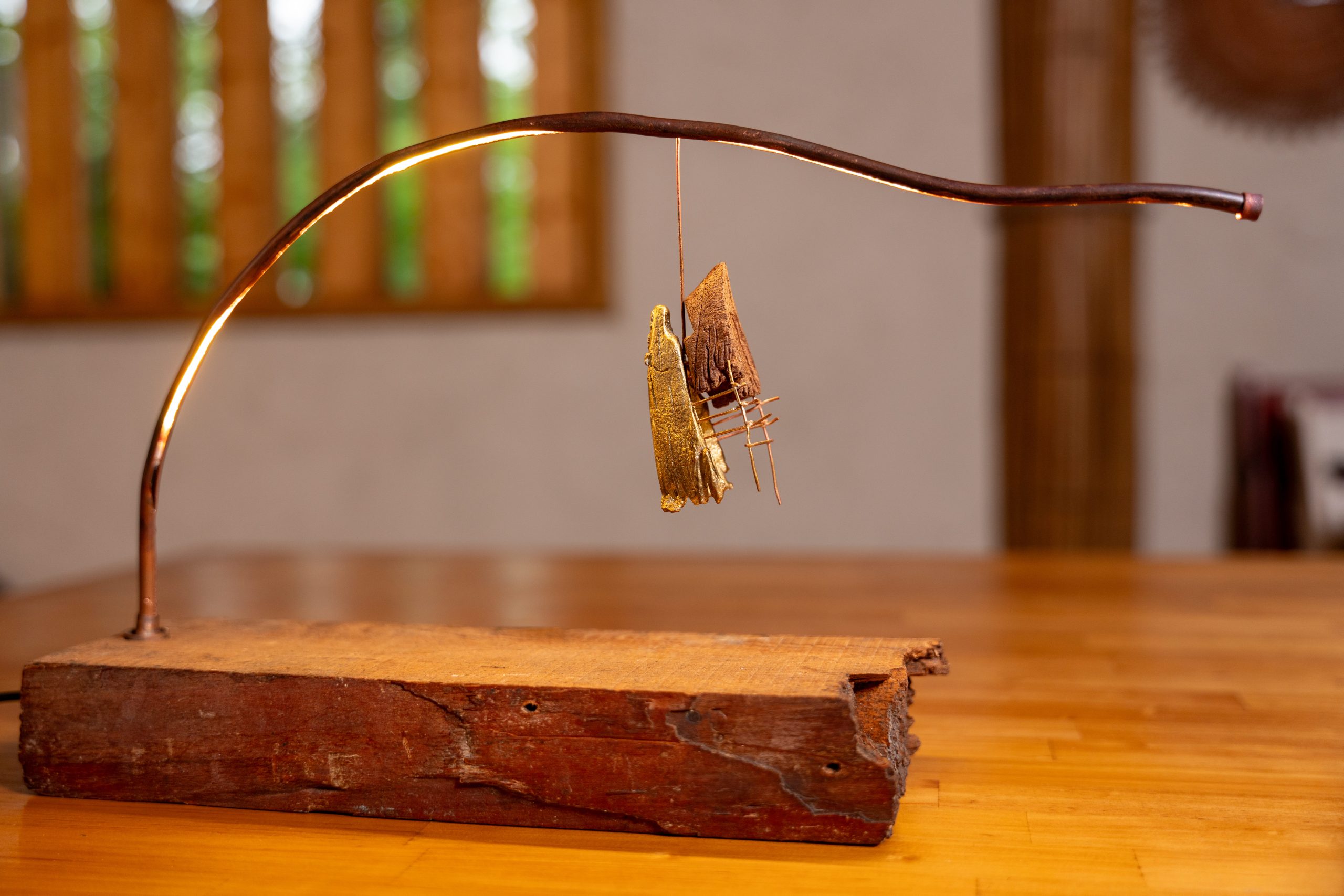
Kabong by Su Yu-Ting
Taitung artist Wang Yu-Ching, from the Amis indigenous group, created the work Grab Yarn Balls. Inspired by the traditional Malaysian game “Chongkak,” each ball on the game board represents a different ethnicity, speaking different languages, yet coexisting harmoniously. The gameplay is akin to the encounters in life, where, as time passes, you must let go or choose a new group. In the process, there will be losses, but you will also pick up again, just like every meeting and parting in human relationships.
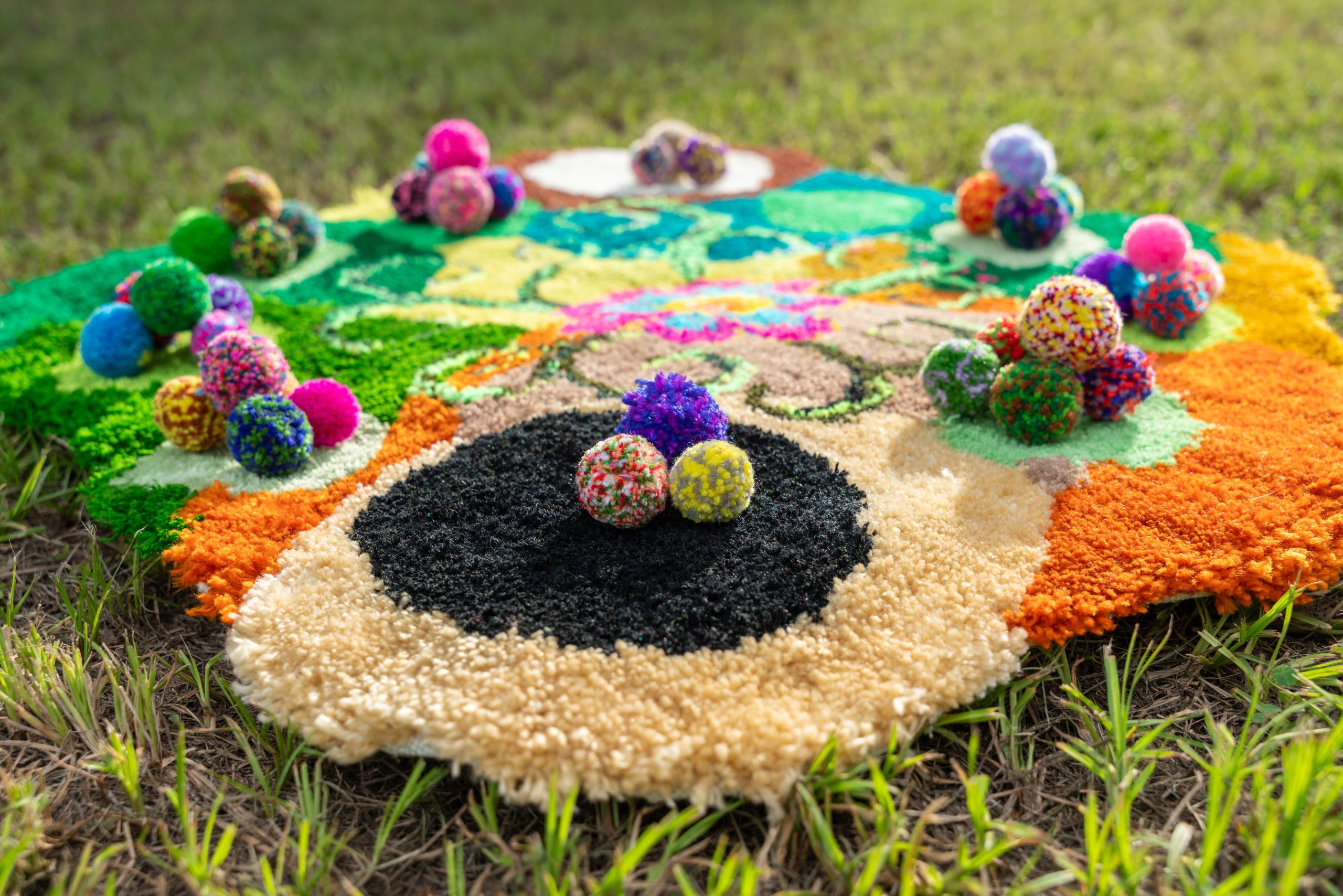
Grab Yarn Balls by Wang Yu-Ching
Taitung artist Chang Chia-Hui, known for her expertise in rattan and bamboo weaving, during the incidence she comes to understand the local natural and cultural elements. The mosque architecture features domed roofs, resembling a bird’s nest, symbolizing “home,” while Chinese homes often have lanterns hanging at the entrance. The interplay of light and shadow through geometric patterns creates a warm and serene atmosphere, evoking the feeling of being “home.”
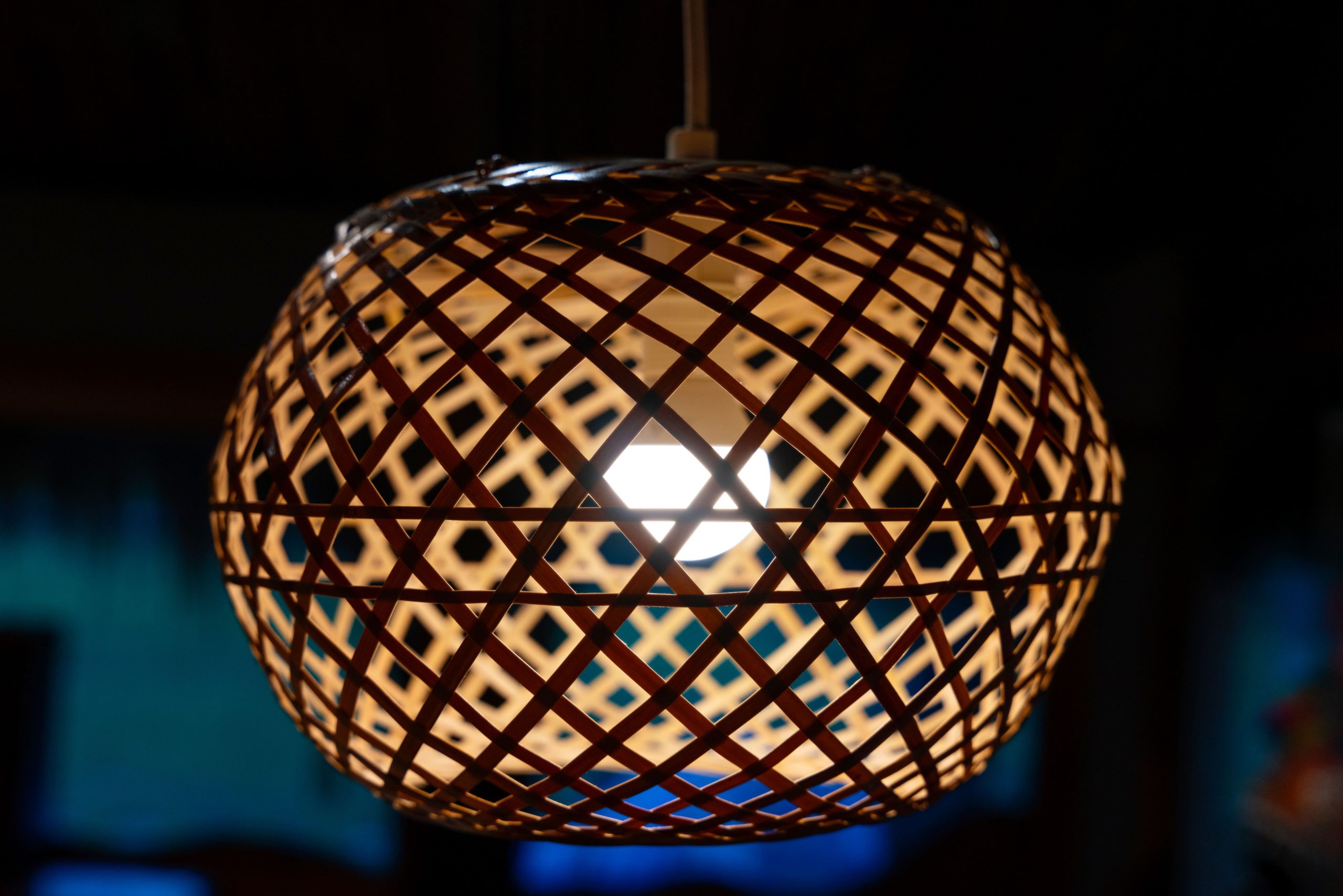
Home by Chang Chia-Hui
Ripples of the Pacific International Exchange Program is not only an exchange of techniques and arts but also a fusion of cultural meanings. During their residencies, the artists immerse themselves in Taitung, engaging in dialogue with local artisans and indigenous cultural workers. Through site visits and experiences, they draw inspiration and incorporate it into their work. Through this program, we see that the roots of Austronesian culture are not confined to a single region, but extend across various islands and cultures, forming an interconnected network.